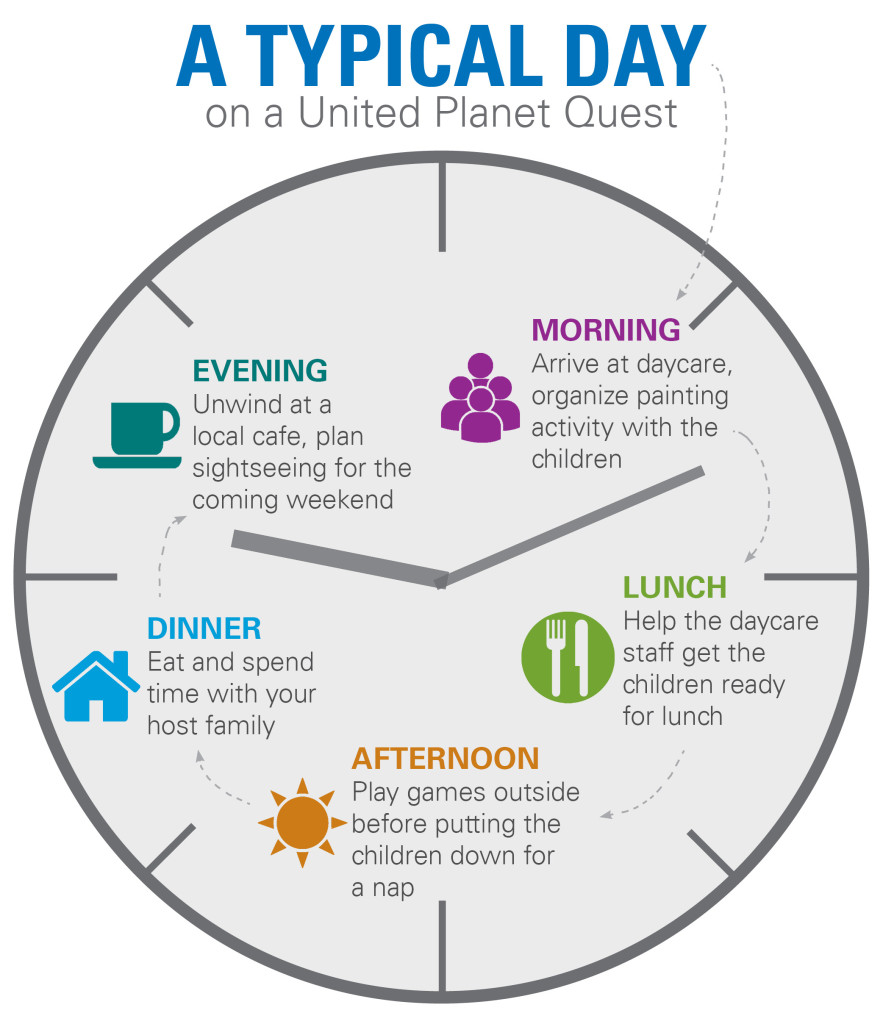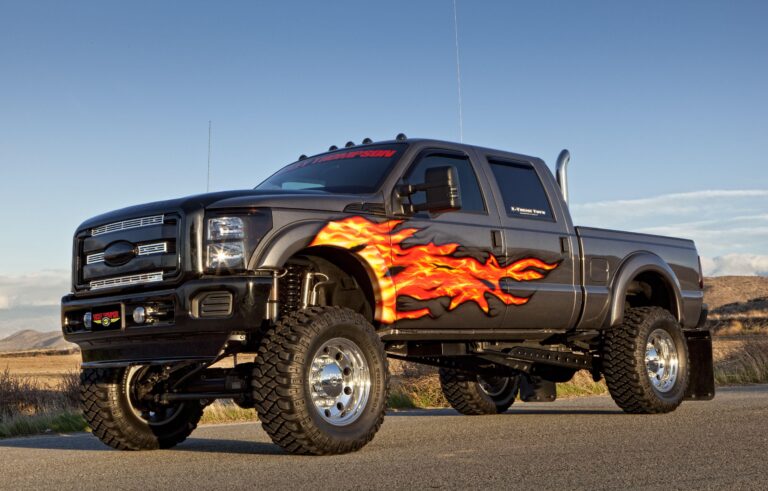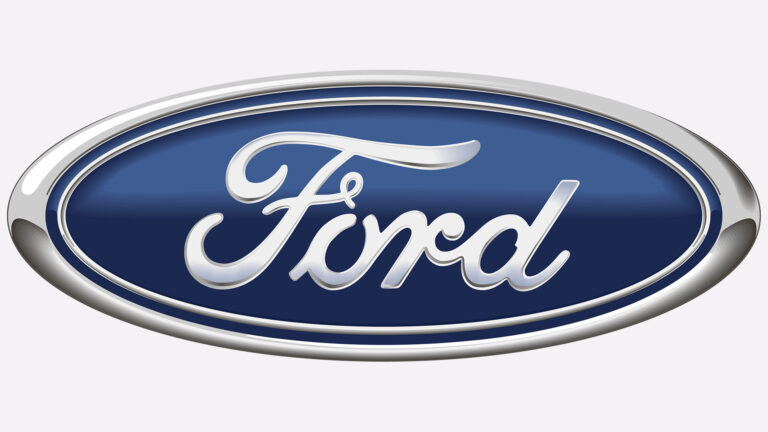Typical Component Breakdown Of A Truck Cab: A Comprehensive Guide
Typical Component Breakdown Of A Truck Cab: A Comprehensive Guide cars.truckstrend.com
The truck cab, far more than just a metal box, is the nerve center and living space for truck drivers. It’s where countless hours are spent, controlling the vehicle, managing logistics, and enduring the rigors of the road. Understanding the typical component breakdown of a truck cab is not just about anticipating repairs; it’s crucial for ensuring driver safety, operational efficiency, and extending the lifespan of the vehicle. From structural integrity to intricate electrical systems, every component plays a vital role, and its failure can lead to significant downtime and costly repairs. This comprehensive guide will delve into the various parts of a truck cab, highlight their common failure points, and offer insights into prevention and maintenance.
The Foundation: Structural and Mounting Components
Typical Component Breakdown Of A Truck Cab: A Comprehensive Guide
The very essence of the truck cab lies in its structural integrity and how it’s mounted to the chassis. These components bear the brunt of road vibrations, impacts, and environmental stressors.
Cab Shell (Doors, Roof, Pillars, Floor)
The primary structure of the cab is its shell, comprising the roof, floor, pillars (A, B, C), and door frames. While designed for durability, these components are susceptible to:
- Rust and Corrosion: Especially in areas exposed to moisture, road salt, and chemicals. This can weaken the structure, leading to leaks and compromised safety.
- Dents and Cracks: From minor impacts, falling debris, or even severe torsional stress over time. Cracks can propagate, leading to structural instability.
- Weld Failures: Over years of vibration and stress, welds can crack or break, particularly around mounting points or high-stress areas.

Cab Mounting System
The cab isn’t rigidly bolted to the frame; it’s typically mounted on a suspension system, often involving springs, air bags, and shock absorbers. This system isolates the cab from chassis vibrations and road shock, providing a smoother ride for the driver.
- Worn Cab Mounts/Bushings: These rubber or polyurethane components degrade over time, leading to increased cab vibration, noise, and excessive movement.
- Air Bag Leaks/Failure: In air-ride cabs, the air bags can develop leaks or rupture, causing the cab to sag, impacting ride quality and potentially leading to damage to other components.
- Shock Absorber Failure: Worn shocks result in a bouncy ride and reduced dampening, accelerating wear on other cab components.
- Mounting Bolts/Brackets: Loosening or breaking of these critical fasteners can lead to dangerous cab detachment or severe damage.

The Command Center: Interior Components
The interior of a truck cab is the driver’s office, lounge, and sometimes, bedroom. Comfort, functionality, and ergonomics are paramount, and the failure of interior components directly impacts driver well-being and productivity.

Seating System
The driver’s seat, often air-suspended, is a complex assembly designed for comfort and adjustability.
- Upholstery Wear/Tear: Constant use leads to worn fabric, tears, and damaged foam, reducing comfort.
- Suspension System Failure: Air leaks in air-ride seats, worn shocks, or malfunctioning height adjustment mechanisms.
- Recline/Slide Mechanisms: Sticking, breaking, or loosening of levers and tracks.
- Heater/Cooler Elements: Failure of electrical heating or cooling pads.
Dashboard & Instrumentation
The dashboard houses critical gauges, warning lights, and control switches.
- Gauge Failure: Inaccurate readings, intermittent operation, or complete failure of speedometer, tachometer, fuel, or temperature gauges. Often electrical or sensor-related.
- Warning Light Malfunctions: Lights staying on erroneously or failing to illuminate when a fault is present.
- Cracked/Faded Plastic: UV exposure and temperature fluctuations can degrade the plastic, leading to cracks and brittleness.
HVAC System (Heating, Ventilation, Air Conditioning)
Maintaining a comfortable cab temperature is essential.
- Blower Motor Failure: Reduces or eliminates airflow.
- Refrigerant Leaks: In the AC system, leading to loss of cooling.
- Compressor Failure: The heart of the AC system, prone to wear and tear.
- Heater Core Leaks/Clogs: Affects heating efficiency and can lead to coolant leaks inside the cab.
- Control Unit Malfunctions: Issues with temperature knobs, fan speed switches, or blend door actuators.
Steering Column & Controls
- Excessive Play: Looseness in the steering column, often due to worn bushings or universal joints.
- Tilt/Telescopic Mechanism Failure: Inability to adjust the steering wheel position.
- Integrated Switch Malfunctions: Issues with wiper, turn signal, or cruise control switches mounted on the column.
Interior Lighting & Trim
- Bulb Failure/LED Issues: Dome lights, map lights, gauge backlighting.
- Loose/Broken Trim Panels: Rattles, exposed wiring, and degraded aesthetics.
The Brains and Nerves: Electrical and Electronic Systems
Modern truck cabs are highly digitized, relying on complex electrical and electronic systems for nearly every function. These are often the most challenging to diagnose.
Wiring Harnesses
The network of wires connecting all components.
- Chafing/Abrasion: Wires rubbing against sharp edges, leading to insulation breakdown and short circuits.
- Corrosion: Especially at connectors and splices, leading to high resistance and intermittent faults.
- Rodent Damage: Chewed wires are a surprisingly common problem.
Electronic Control Units (ECUs) / Modules
The "brains" that control various cab functions (e.g., Cab Control Module, Body Control Module).
- Software Glitches: Requires re-flashing or updates.
- Hardware Failure: Internal component failure due to voltage spikes, heat, or age.
Switches and Controls
- Contact Wear: Over time, electrical contacts in switches (power windows, mirrors, wipers, lights) wear out, leading to intermittent or complete failure.
- Backlighting Failure: Individual switch lights burning out.
Infotainment System
- Screen Issues: Pixelation, freezing, or complete blanking.
- Sound Problems: Speaker failure, distorted audio, or no sound.
- Connectivity Issues: Bluetooth, USB, or navigation system malfunctions.
Sensors
Numerous sensors monitor conditions within the cab (e.g., door ajar, seatbelt presence, temperature).
- Calibration Issues: Incorrect readings.
- Wiring/Connector Problems: Leading to intermittent signals.
- Internal Failure: The sensor itself stops working.
The Outer Shield: External Cab Components
These components are exposed to the elements and play a role in safety, visibility, and vehicle aesthetics.
Doors
- Hinge Wear: Leading to sagging doors, difficult closing, and air/water leaks.
- Latch Mechanism Failure: Doors not closing securely or not opening.
- Power Window/Lock Motors: Slow operation, complete failure, or intermittent issues.
- Weather Stripping: Cracking, shrinking, or tearing, leading to wind noise and water intrusion.
Windshield & Windows
- Cracks/Chips: From road debris.
- Seal Leaks: Around the windshield or side windows, causing water ingress.
- Power Window Regulators: Failure of the mechanism that raises and lowers the glass.
Mirrors
- Glass Damage: Cracks or breaks.
- Motor Failure: For power-adjustable mirrors.
- Heating Element Failure: In heated mirrors.
- Vibration: Loose mounting causing blurry vision.
Wiper System
- Wiper Motor Failure: Wipers not moving or moving slowly.
- Linkage Problems: Bent or broken arms preventing full sweep.
- Fluid Reservoir Leaks/Pump Failure: No washer fluid.
- Blade Wear: Reduced effectiveness in clearing the windshield.
Exterior Lighting
- Bulb Failure/LED Issues: Headlights, marker lights, turn signals, fog lights.
- Housing Damage: Cracked lenses, water ingress.
- Wiring Corrosion: Leading to intermittent or no power.
Common Causes of Component Breakdown
Understanding why components fail is key to prevention.
- Age and Wear and Tear: Simply put, parts wear out over time and use.
- Vibration and Road Shock: Constant movement and impacts take a toll on all components, especially electrical connections and structural welds.
- Environmental Factors: Extreme temperatures (heat and cold), moisture, UV radiation, and road salt accelerate degradation.
- Corrosion: Oxidation of metals, particularly at electrical connections and exposed structural parts.
- Electrical Overload/Short Circuits: Can damage wiring, modules, and switches.
- Impact/Accident Damage: Obvious but significant cause of structural and external component failure.
- Poor Maintenance: Neglecting cleaning, lubrication, and addressing minor issues can lead to major failures.
- Manufacturing Defects: While rare, inherent flaws can lead to premature failure.
Practical Advice and Actionable Insights
Proactive maintenance is the best defense against costly breakdowns.
- Regular Pre-Trip and Post-Trip Inspections: Make it a habit to visually inspect the cab, checking for loose components, unusual noises, warning lights, and proper function of all controls.
- Address Minor Issues Promptly: A small crack in the windshield can become a major one. A loose trim panel can lead to chafed wires. Nip problems in the bud.
- Keep the Cab Clean: Regular cleaning prevents dirt and grime buildup that can hide issues, promote rust, and affect electrical contacts.
- Lubricate Moving Parts: Hinges, latches, seat mechanisms, and window regulators benefit from periodic lubrication.
- Check Electrical Connections: Ensure all visible electrical connectors are secure and free of corrosion.
- Understand OEM vs. Aftermarket Parts: OEM (Original Equipment Manufacturer) parts generally offer guaranteed fit and quality but are more expensive. Aftermarket parts can be cost-effective but vary widely in quality. For critical safety components, OEM is often preferred.
- Know When to Seek Professional Help: While some minor repairs can be DIY, complex electrical issues, structural repairs, or HVAC system problems are best left to certified technicians.
Concluding Summary
The truck cab, a complex interplay of mechanical, electrical, and structural components, is constantly subjected to demanding conditions. Understanding the typical breakdown points is essential for every truck owner and operator. By prioritizing regular inspections, adhering to preventative maintenance schedules, and addressing issues promptly, you can significantly reduce downtime, enhance driver comfort and safety, and ultimately extend the operational life of your valuable asset. Proactive care of your truck’s cab isn’t just about avoiding repairs; it’s an investment in reliability and peace of mind on the open road.
Estimated Typical Component Breakdown & Repair Costs (USD)
Disclaimer: Prices are estimates only and can vary significantly based on truck make/model, year, part availability (OEM vs. aftermarket), labor rates in your region, and the specific shop. These figures are for general guidance.
| Component Group | Typical Issue(s) | Estimated Part Cost (USD) | Estimated Labor Hours | Total Estimated Cost (USD) |
|---|---|---|---|---|
| Structural/Mounting | ||||
| Cab Mounts/Bushings | Worn, cracked, failed | $100 – $500 per mount | 2 – 6 | $300 – $1,500+ |
| Cab Shock Absorber | Leaking, ineffective damping | $80 – $300 per shock | 1 – 3 | $150 – $600 |
| Cab Air Bag | Leak, rupture | $150 – $400 per bag | 1 – 4 | $250 – $800 |
| Rust Repair (Minor) | Surface rust, small holes | $50 – $300 (materials) | 2 – 8+ | $250 – $1,000+ |
| Interior Components | ||||
| Driver Seat Air Bag | Leak, suspension issues | $200 – $600 | 2 – 5 | $400 – $1,200 |
| Seat Upholstery Repair | Tears, worn fabric | $100 – $500 (kit/patch) | 1 – 4 | $200 – $800 |
| Dashboard Gauge | Inaccurate, non-functional | $50 – $300 per gauge | 1 – 3 | $150 – $500 |
| HVAC Blower Motor | No airflow, weak airflow | $80 – $250 | 1 – 3 | $150 – $500 |
| AC Compressor | No cooling, noisy | $300 – $800 | 3 – 6 | $600 – $1,500 |
| Heater Core | Leaking, no heat | $150 – $400 | 4 – 8+ | $500 – $1,500+ |
| Steering Column Play | Worn U-joint, bushings | $100 – $500 | 2 – 6 | $300 – $1,200 |
| Electrical/Electronic | ||||
| Wiring Harness Repair | Short, open circuit | $50 – $300 (materials) | 1 – 5+ | $100 – $800+ |
| Cab Control Module (ECM) | Software issues, hardware failure | $500 – $2,000+ | 1 – 4 | $600 – $2,500+ |
| Power Window Switch | Non-functional, intermittent | $30 – $150 | 0.5 – 1 | $80 – $250 |
| Infotainment System | Screen issues, no sound | $400 – $2,000+ | 1 – 3 | $500 – $2,500+ |
| External Cab Components | ||||
| Door Hinge | Sagging door, difficult closing | $50 – $200 per hinge | 1 – 3 | $150 – $500 |
| Door Latch | Door not closing/opening | $70 – $250 | 1 – 2 | $150 – $400 |
| Power Window Motor/Reg. | Window stuck, slow operation | $100 – $350 | 1 – 3 | $200 – $700 |
| Windshield Replacement | Crack, chip | $300 – $800 | 1 – 3 | $400 – $1,000 |
| Side Mirror Assembly | Broken glass, motor failure | $150 – $600 | 0.5 – 1.5 | $200 – $800 |
| Wiper Motor | Wipers not moving | $100 – $300 | 1 – 2 | $200 – $500 |
| Headlight Assembly | Cracked lens, non-functional | $100 – $500+ | 0.5 – 1.5 | $150 – $700+ |
Frequently Asked Questions (FAQ)
Q1: How often should I inspect my truck cab components?
A1: A quick visual inspection of critical components (lights, wipers, mirrors, gauges, general cab condition) should be part of your daily pre-trip inspection. A more thorough inspection, including checking cab mounts, wiring, and fluid levels, should be done during routine maintenance intervals, typically every few thousand miles or as recommended by your truck’s manufacturer.
Q2: Are aftermarket parts good enough, or should I always use OEM (Original Equipment Manufacturer) parts?
A2: For critical safety components (e.g., cab mounts, steering column parts, major electrical modules), OEM parts often provide guaranteed fit, quality, and performance. For non-critical components or those where quality is well-established (e.g., wiper blades, some interior trim, certain light bulbs), aftermarket parts can be a cost-effective alternative. Always research the reputation of the aftermarket brand.
Q3: Can I fix electrical issues in my truck cab myself?
A3: Minor electrical issues, like replacing a fuse or a simple bulb, can often be done by the owner. However, complex electrical diagnostics, wiring harness repairs, or issues involving ECUs/modules typically require specialized tools, diagnostic software, and expertise. Attempting complex electrical repairs without proper knowledge can lead to further damage or safety hazards.
Q4: What’s the most common cab component to fail?
A4: While it varies, components subjected to constant wear and tear or environmental exposure are common culprits. This includes cab mounts and shocks, power window motors/regulators, HVAC blower motors, wiper system components (motor, blades), and various electrical switches and wiring issues due to vibration and corrosion.
Q5: How does severe weather affect truck cab components?
A5: Severe weather significantly accelerates wear. Extreme cold can make plastics brittle and cause fluids to thicken, stressing motors. Extreme heat can degrade rubber components (seals, bushings), crack plastics, and strain AC systems. Moisture and road salt (in winter) are primary causes of rust and corrosion, particularly on the cab shell, mounts, and electrical connectors. Regular cleaning and rust prevention are crucial in such conditions.






